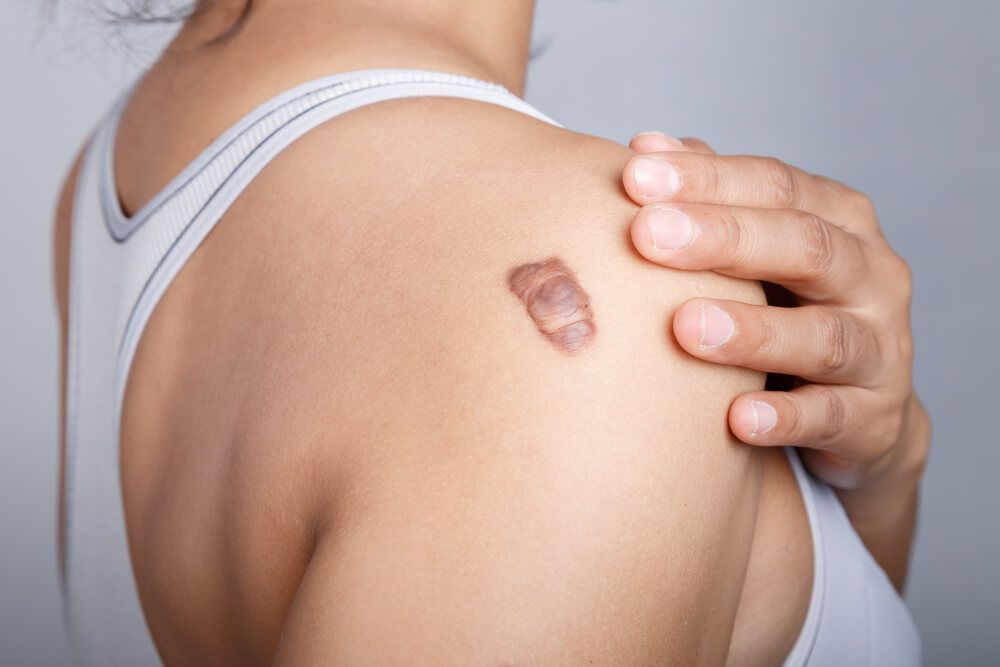What is a Keloid?
A keloid is a type of raised scar. Unlike other raised scars, keloids grow much larger than the wound that caused the scar. Board-certified dermatologists have expertise in treating keloids.
Is a keloid contagious? No
In what race are keloids most common?
People of all races get keloids. Findings from studies, however, suggest that Black people have the greatest risk of developing keloids. People of Asian, Latin American, or Mediterranean descent are more likely to develop keloids than people who have a lighter skin tone.
Why are keloids more common among people who have a darker skin tone?
Researchers have found that between 33% and 50% of people who develop a keloid have at least one blood relative who gets keloids. This suggests that some people inherit genes that make them more likely to develop keloids.
Dermatologists have found that these genes are more common in people who have a darker skin tone. In the United States, Black people are most likely to have one or more blood relatives who get keloids.
When do keloids appear?
A keloid usually takes time to appear. After you injure your skin, months can pass before this scar appears. Once it begins, a keloid tends to grow slowly for months or years.
This slow growth differs greatly from the other type of raised scar called a hypertrophic scar.
If you have a hypertrophic scar, it appears one to two months after you wound your skin and the scar tissue doesn’t grow beyond the wound. With time, a hypertrophic scar often becomes less noticeable.
While keloids tend to develop slowly, some appear more quickly.
Do keloids go away?
Unlike a hypertrophic scar, a keloid doesn’t fade with time. To reduce the appearance of a keloid, you need to treat it.
When it comes to treatment, no one treatment works best for all keloids. That’s why dermatologists consider where the keloid appears on your body, its size, and how deeply the keloid penetrates your skin.
Your age and how you responded to past treatment for a keloid also help determine what type of treatment would give you best results.
Do keloids hurt?
While a keloid is growing, it can cause pain or discomfort. The pain usually goes away when the keloid stops growing.
On rare occasion, keloids can remain tender and painful.
Can a keloid turn into cancer?
No, keloids do not turn into cancer.
If you’re in Trumbull County, including Howland, Champion, and Warren, OH, trust the expertise of Dr. Morgan Hott, Dr. Hamrock, Victoria Dennis, FNP-C, Wendy Demetrios, FNP-C and Brianna Marin, MPAS, PA-C at Warren Dermatology & Mohs Surgery. Schedule your consultation today at (330) 856-6365. Let’s journey towards healthier skin together.



